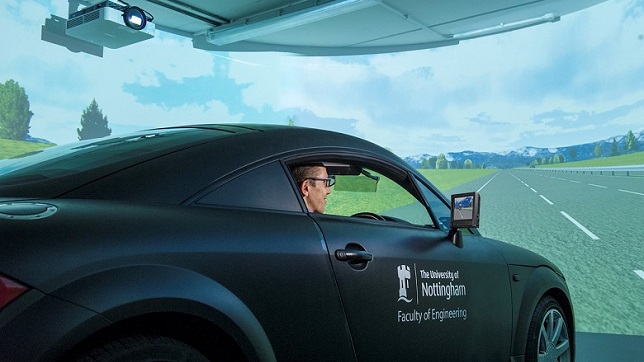Driver training essential to meet demands of automated vehicles of the future, study suggests

A new study by the University of Nottingham and the RAC Foundation suggests that behavioral training for drivers is paramount for the transition into the next stage of automated vehicles, known as level 3 automation.
Researchers from the University’s Human Factors Research Group studied two groups of experienced drivers in a high-fidelity driving simulator to observe their behaviour while ‘driving’ a car with level 3 automation.
The study found that drivers who received behavioural training were more measured in their behaviour and better understood the car’s capabilities and limitations.
The behavioural training included the provision of a checklist known as ‘CHAT’, pioneered by Emily Shaw in the University’s Faculty of Engineering. The other group trained by reading an operating manual.
Key findings found in the behavioural training group:
- Significantly more likely to notice a potential hazard during the transition from automated to manual driving (in this case, a tailgating car), with 90% of drivers noticing the car in this group, compared to 24% of the operating manual group
- Made more measured decisions in lane change manoeuvre shortly after taking back manual control
- Spent more time preparing (e.g. acquiring knowledge of the road environment through mirror checks) before physically making the lane change
- Made more mirror checks in the run up to and during the lane change manoeuvre
- Checked their mirrors more frequently, even while the car was driving autonomously.
During a period of automated driving, participants in both groups could decide whether to engage in a non-driving task, such as looking at their phone, tablet, laptop or reading materials, or nothing at all. When notified by the vehicle to take back control and transition from automated driving, the group who were trained with only an operating manual took almost 10 times longer to pay full attention to driving, continuing glances at their non-driving task for an average of 11.2 seconds, compared with 1.8 seconds in the behavioural group.
The behavioural group was also markedly faster at making their first glance at the road when notified to take over — on average 7.3 seconds, in comparison to 21 seconds in the other group.
Transforming the role of the driver
Emily Shaw developed the driver behaviour training (‘CHAT’) as a proof of concept to test during the study, designed as a standardized operating procedure, to motivate and support drivers in remembering and applying explanatory knowledge acquired about level 3 automated vehicles.
The letters represent the actions required and help to guide the driver in making the appropriate checks and assessment of their internal and external environments prior to taking over operational control of the vehicle:
- CH = CHeck
- A = Assess
- T =Takeover
Emily Shaw said: “We chose the acronym carefully to ensure the procedure was easy to remember, as well as the semantic association with the word chat – giving a purposeful nod to the necessary communication that needs to take place whenever control is being passed between members of a team, as a further reminder of the shared control drivers have with the automated systems.”
Understanding the capabilities and limitations of automated vehicles
Cars on the road at present are equipped with levels 1 and 2 of vehicle automation, meaning several simultaneous activities which assist steering or acceleration are partially automated — this includes, lane centring, adaptive cruise control, blind spot warning and automatic emergency braking.
At level 3, automation capability extends to the monitoring task, allowing drivers to switch their attention towards non-driving related tasks (NDRTs). However, the human driver remains responsible for the vehicle’s actions and must be ready to intervene in the event of a system failure or where the boundary of the automated system’s operational design has been reached.
Planned takeovers — when a vehicle issues a takeover request to the driver because the boundaries of automated driving capability have been reached — will become a normal part of the driving task with level 3 vehicles.


